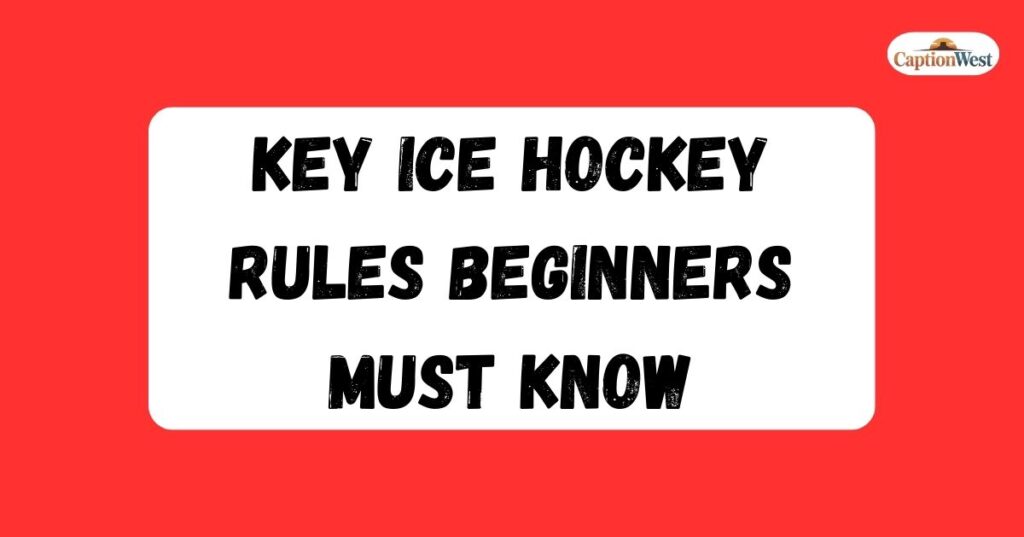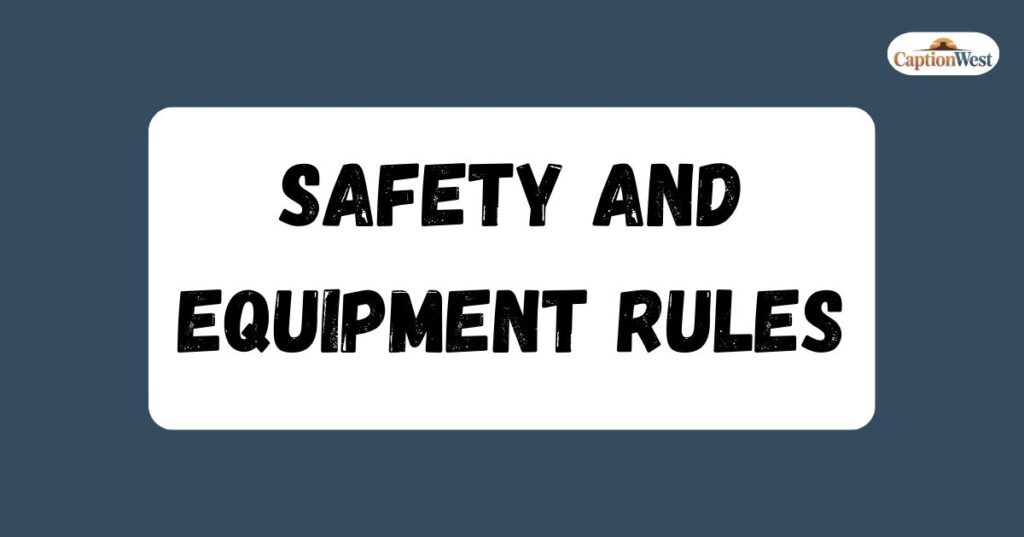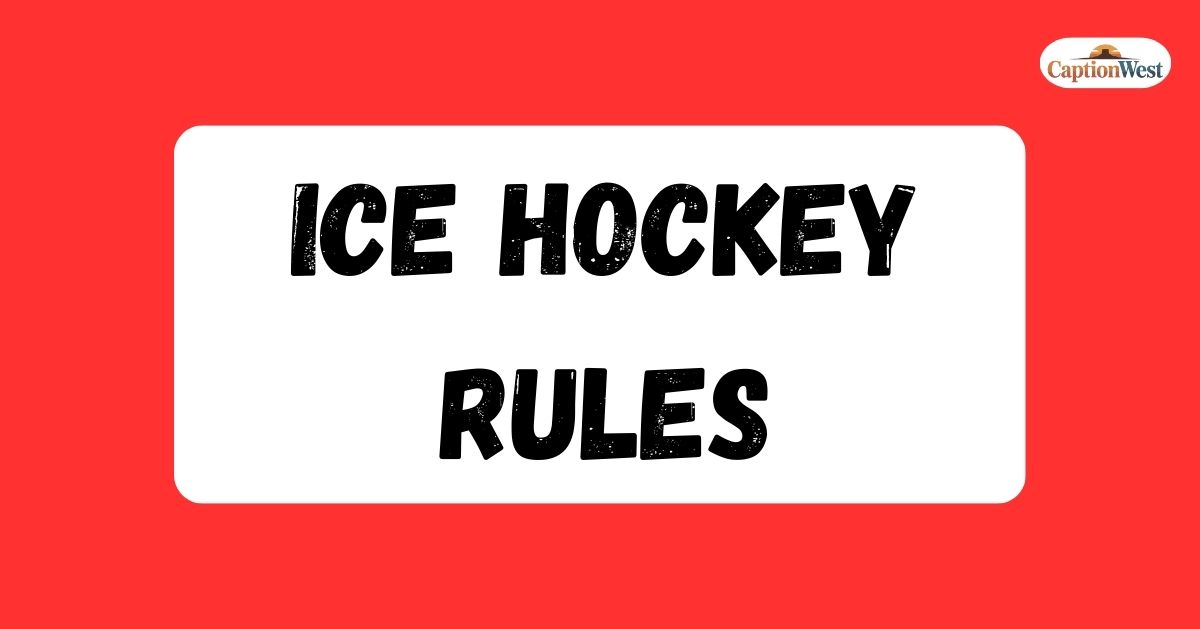If you’ve ever watched an ice hockey match and found yourself confused by the speed, whistles, and penalties, you’re not alone. Ice hockey is one of the fastest and most exciting sports in the world, but its rules can seem complicated for beginners.
Don’t worry, we’ve put together a complete guide to the most important ice hockey rules so you can enjoy the game without scratching your head.
Whether you’re planning to attend an NHL game, play with friends at a local rink, or just want to understand the basics, this article will cover everything: the rink layout, periods, penalties, face-offs, overtime, playoffs, and much more.
Read Must : Mormon Rules: Understanding the Lifestyle and Beliefs of the LDS Church
Basics of Ice Hockey Rules
Ice hockey is played between two teams of six players each, five skaters and one goalie. The objective is simple: score more goals than your opponent by shooting the puck into their net. But the way the game works has many layers.
- Number of Players: Each side has 6 active players, but teams usually have around 20 players who rotate during the game.
- Substitutions: Players are often on the ice for less than a minute at a time. Substitutions happen “on the fly,” meaning new players can jump on as others come off without stopping play.
- Game Length: A professional hockey game has 60 minutes of playtime, split into three periods of 20 minutes each, with a 15-minute break between periods.
- Stopping the Clock: The clock stops whenever the puck is out of play, making the actual length of a game around 2.5 hours.
The Hockey Rink Explained
Understanding the rink is essential for learning the ice hockey rules.
- Zones: The rink is divided into three zones by two blue lines:
- Defensive Zone – where your own goal is.
- Offensive Zone – where the opponent’s goal is.
- Neutral Zone – the middle of the rink.
- Defensive Zone – where your own goal is.
- Goal Line & Crease: Each goal is positioned on a red goal line. The half-circle in front of the goal is called the crease, and only the goalie is allowed to defend inside it.
- Face-off Circles: There are 8 red face-off dots on the rink. After a stoppage in play, the puck is dropped here by the referee.
- Referee Crease: Found in the neutral zone, this is where referees stand during breaks.
Starting and Restarting Play: The Face-off
A face-off is how every period starts and how play resumes after a stoppage.
- Two opposing players line up at the face-off dot.
- The referee drops the puck between their sticks.
- Both players battle to gain possession for their team.
Face-offs keep the game fair and structured, ensuring every restart has equal opportunity for both teams.
Key Ice Hockey Rules Beginners Must Know

Here are the most important rules that every beginner should understand:
1. Offside Rule
- A player cannot enter the offensive zone before the puck does.
- If they do, the play is stopped, and a face-off occurs in the neutral zone.
2. Icing Rule
- If a player shoots the puck across the center red line and past the opponent’s goal line without it being touched, it is called icing.
- Result: Play is stopped and a face-off happens in the guilty team’s defensive zone.
- Exception: If a team is short-handed (penalty kill), icing is allowed.
3. Penalties
Physical contact is part of the game, but dangerous or unfair actions are penalized. Common penalties include:
- Tripping: Using your stick or body to knock down an opponent.
- Hooking: Using your stick to slow down or pull an opponent.
- Cross-checking: Hitting an opponent with the stick held in both hands.
- High Sticking: Raising the stick above shoulder level.
- Fighting: Players who fight usually receive a 5-minute penalty each.
4. Power Play and Penalty Kill
- When a player commits a foul, they go to the penalty box for 2 to 10 minutes.
- During this time, their team plays with one fewer player, giving the opponent a power play advantage.
- If the opponent scores, the penalty usually ends early.
5. Penalty Shot
- Awarded when a player is fouled on a clear scoring chance (usually on a breakaway).
- The fouled player takes a one-on-one shot against the goalie.
- Rules: Only the shooter and goalie are allowed on the ice, and the goalie must stay in the crease until the puck is played.
Game Structure: Periods and Overtime
- Three Periods: Each hockey game has three 20-minute periods. Teams switch sides after each period.
- Overtime: If the game is tied after regulation, overtime is played. In the NHL:
- Regular season overtime is 5 minutes of 3-on-3 sudden death.
- If no one scores, the game goes to a shootout.
- In the playoffs, overtime is 20 minutes of 5-on-5, and teams play until someone scores.
- Regular season overtime is 5 minutes of 3-on-3 sudden death.
Playoffs and Tournament Rules
In major leagues like the NHL, playoffs determine the champion.
- Teams: 16 teams qualify (8 from each conference).
- Format: Best-of-seven series. A team must win four games to advance.
- Intensity: Rules are the same, but referees often allow more physical play in the playoffs.
Safety and Equipment Rules

Because hockey is a full-contact sport, protective equipment is mandatory.
- Helmet with visor or cage
- Shoulder pads and chest protector
- Gloves, shin guards, and elbow pads
- Mouthguard and neck guard
- Goalie gear is even more advanced, with bigger pads, blocker, catcher glove, and a reinforced mask.
The strict equipment rules keep players safe in a sport where pucks can travel over 100 mph and body checks are frequent.
Common Hockey Terms You Should Know
To follow the game better, here are some must-know hockey terms:
- Power Play: When a team has more players due to an opponent’s penalty.
- Penalty Kill: The short-handed team trying to defend while a player is in the penalty box.
- Slap Shot: A powerful shot with a full swing of the stick.
- Wrist Shot: A quick, controlled shot with the wrists.
- Breakaway: When a player goes one-on-one against the goalie.
- Checking: Legal body contact to stop an opponent.
- Shootout: Players take penalty shots to decide a tied game.
Why Ice Hockey Rules Matter
Without rules, hockey would be chaos. The rules of ice hockey balance physical play with fairness, ensuring games are competitive yet safe. For fans, understanding these rules makes watching games more exciting because every whistle and penalty suddenly makes sense.
FAQs About Ice Hockey Rules
1. How many players are on the ice in hockey?
Each team has 6 players on the ice—5 skaters and 1 goalie.
2. How long is a hockey game?
A standard game has 60 minutes of play divided into 3 periods, but stoppages and intermissions make it last around 2.5 hours.
3. What is offside in ice hockey?
Offside occurs when a player enters the offensive zone before the puck does.
4. Can you kick the puck into the goal?
No. Players can use their skates to pass or stop the puck, but they cannot score by kicking it in.
5. What happens in overtime?
In the NHL, overtime is a 5-minute 3-on-3 period. If no goal is scored, the game goes to a shootout (regular season). Playoffs use unlimited 20-minute overtimes until someone scores.
6. What is icing in hockey?
Icing happens when a player shoots the puck across both the center red line and the opponent’s goal line without it being touched.
7. How do penalties work?
Most penalties last 2 minutes, leaving the team short-handed. Serious fouls can result in 5 or 10-minute penalties or even ejections.
Conclusion
Ice hockey may look complicated at first glance, but once you understand the ice hockey rules, it becomes an incredible sport to follow. From face-offs and offside calls to penalties and playoffs, each rule exists to keep the game fast, fair, and fun.
Next time you watch a game, you’ll know exactly why the referee blew the whistle, what a power play means, and why players fight for every face-off. And who knows? You might even be ready to lace up your skates and play a game yourself.

